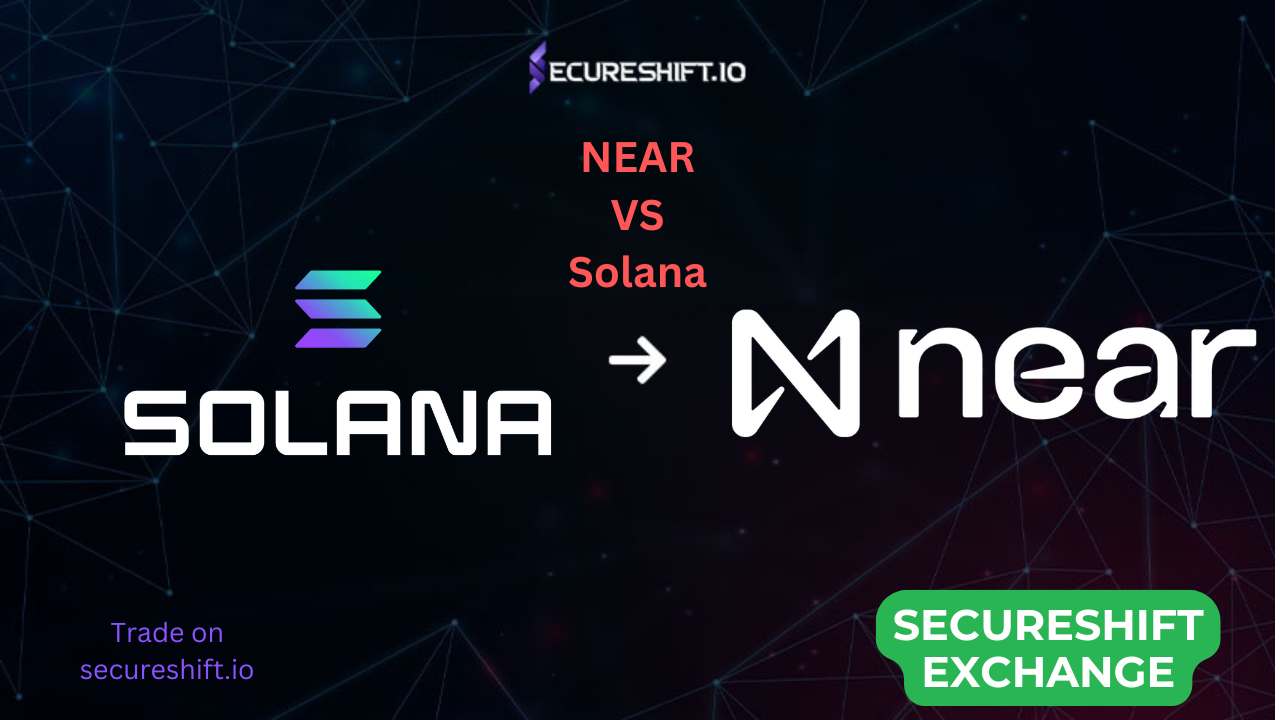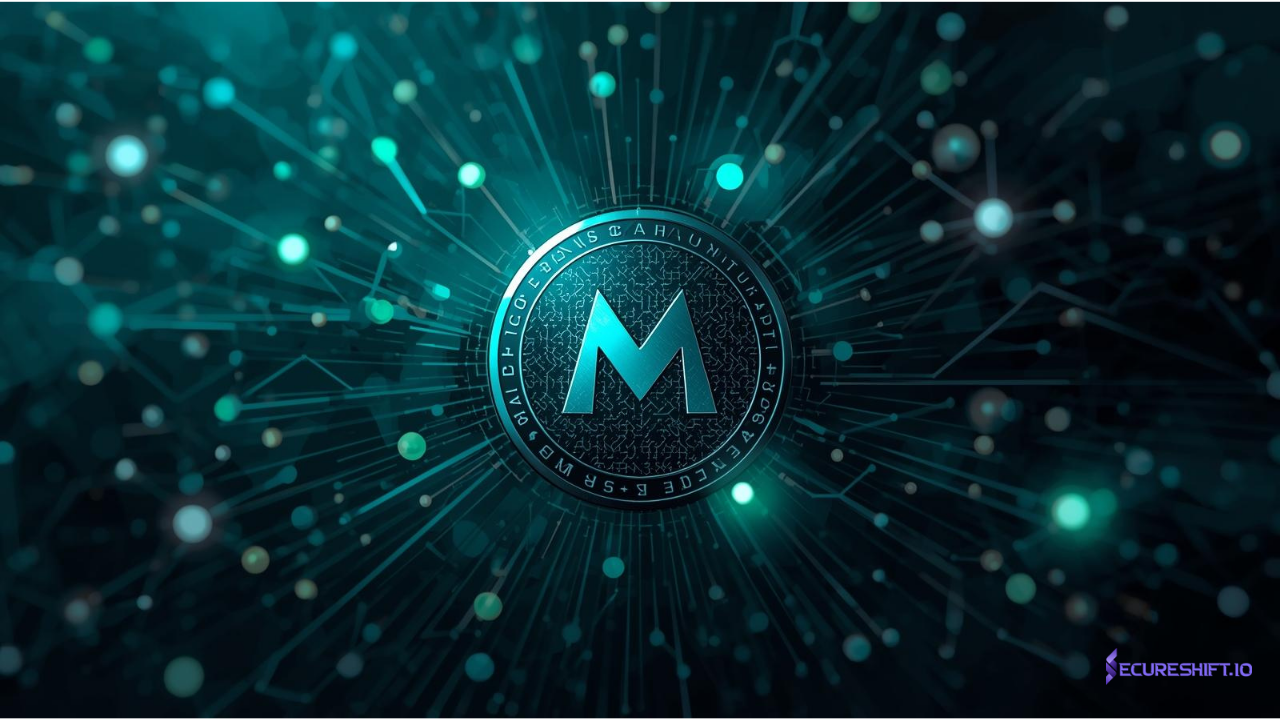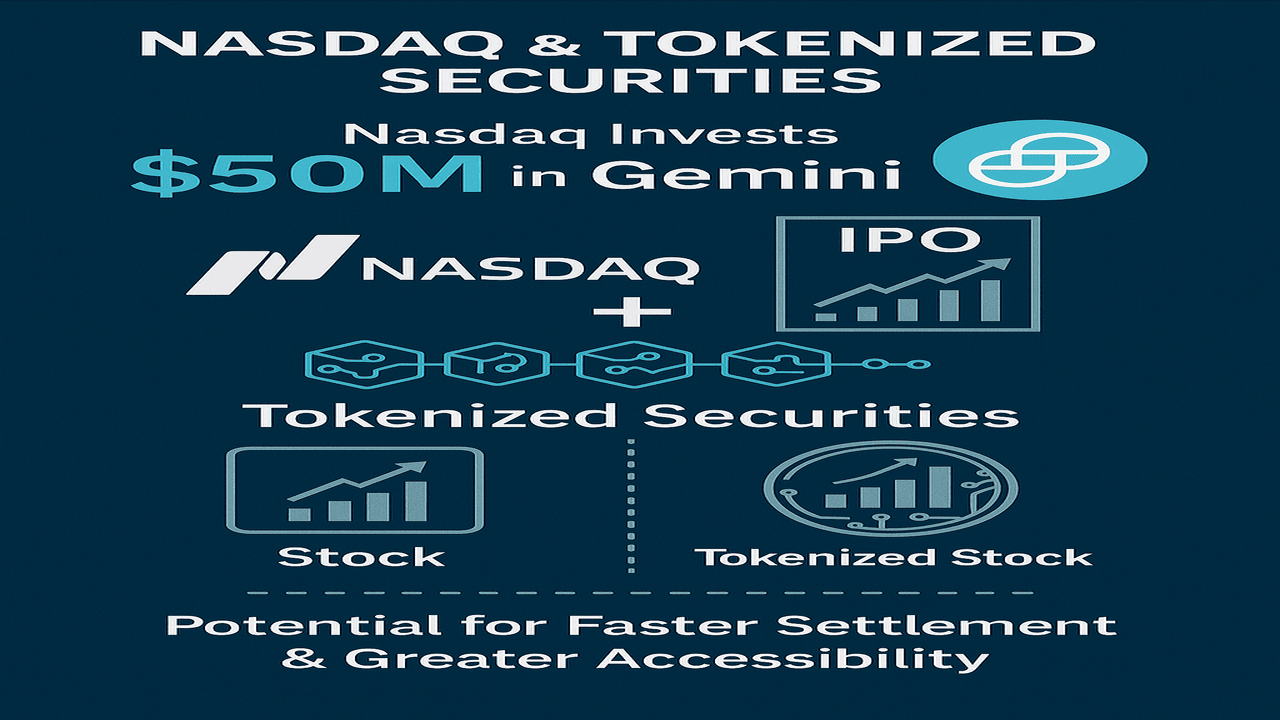
The Solana Blockchain Battle vs. NEAR Protocol
Let's examine two incredibly fascinating blockchains: Solana and NEAR Protocol. Both are developer-focused, blazingly quick, and environmentally friendly. We'll compare their scalability, roadmaps, and—best of all—the ease with which you can switch these tokens on SecureShift.
Table of Contents
The NEAR Protocol The Dream of a Developer
Scalability and user/developer experience are central to the design of NEAR Protocol. To manage numerous transactions at once, it uses Nightshade Sharding, a sophisticated method of dividing the blockchain into shards. NEAR makes blockchain accessible to all by streamlining dApp development.
- The token is $NEAR.
- Thresholded Proof of Stake (TPoS) is the consensus mechanism, guaranteeing decentralization and environmental friendliness.
- Roadmap: The NEAR Protocol roadmap for late 2024 emphasizes stateless validation optimization through enhancements like lowering storage gas costs and implementing resharding to enable dynamic network scaling. A transaction priority fee system, dynamic resharding, and the investigation of a leaderless consensus to improve performance even in the event that some nodes are offline are among the upcoming enhancements scheduled for 2025.
Solana: Fundamentally Fast and Scalable
The Proof of History (PoH) feature of Solana, which timestamps transactions for quicker processing, makes it unique. It is among the world's fastest blockchains, built for high throughput without sacrificing decentralization.
The Proof of Stake (PoS) + Proof of History (PoH) consensus mechanism gives Solana its speed and scalability.
- Roadmap: Solana's upcoming enhancements will concentrate on boosting DeFi features, growing its developer ecosystem, and strengthening network stability.
Comprehensive Dissection: Expanding on Scalability
The blockchain is broken up by NEAR's Nightshade Sharding, allowing it to handle numerous transactions concurrently. Solana's Proof of History uses historical timestamps to guarantee quick transaction processing. Solana's PoH gives it an advantage in terms of raw transaction speed, while NEAR is excellent at managing heavy loads through sharding.
Speed and Charges
Although both blockchains are extremely fast, Solana has transaction finality times of less than one second, whereas NEAR takes around two seconds. We looked at the most recent transactions, and the average fee for Solana is about $0.00196, while the average fee for NEAR is about $0.00448.
Experience of Developers
NEAR is committed to providing user-friendly tools that enable blockchain development for all. Throughout the development cycle, developers have the option of using either JavaScript or Rust. Although any language that compiles to Wasm can theoretically be used to create NEAR smart contracts, a library is necessary to provide high-level functionalities and wrap low-level runtime APIs for a user-friendly experience. Future support for additional languages is anticipated through contributions from the community at large, not just NEAR. Buy Near
Because of its advanced technology, Solana can be more difficult to develop on despite its high performance, but it offers strong tools for developers creating DeFi applications. Most Solana programs are written in Rust, though C/C++ is supported. Seahorse, a wrapper for the Rust-based Anchor framework, is being used by the community to enable other languages like Python.
Applications
DeFi, NFTs, and DAOs are just a few of the use cases that are the focus of NEAR's diverse ecosystem. In terms of Solana, it has established a solid presence in DeFi, dApps, and DEX, and its user and developer base is growing quickly.
Common Ground: Solana & NEAR
Despite using different technologies internally, NEAR and Solana have a few important things in common:
- Eco-friendly: Compared to Proof-of-Work chains like Bitcoin, both operate on Proof-of-Stake (or its variants), which uses a lot less energy.
- Lightning Fast: NEAR and Solana both provide transaction confirmations almost instantly, which is important.
- Low Fees: Both blockchains are renowned for keeping transaction costs affordable, which appeals to both users and developers.
- Cross-chain: In order to facilitate easier transitions between various blockchains and broaden their reach, both projects are aiming for cross-chain integration.
Do you want to exchange tokens with these blockchains to support them? SecureShift makes it simple to switch between $NEAR and $SOL! The procedure is very easy:
- Visit the website of SecureShift.
- Decide which token (for example, NEAR) you wish to exchange.
- Select your SOL, or destination token.
- After entering your wallet addresses and selecting "Exchange," everything is finished!
SecureShift guarantees that you receive the best exchange rates with no additional costs, in addition to providing a quick and safe swap.
FAQ
1. Which blockchain—Solana or NEAR—is faster?
Although both are quick, Solana's Proof of History (PoH) mechanism gives it an advantage over NEAR's sharding, enabling even faster transaction speeds.
- In which blockchain are the fees lower?
NEAR's fees are also minimal, though they may differ slightly based on network usage, whereas Solana's fees are usually lower, frequently only a fraction of a cent.
- Are both blockchains environmentally benign?
Indeed! Because Proof-of-Stake variants are used by both NEAR and Solana, they are significantly more energy-efficient than Proof-of-Work blockchains.
- Can I use DeFi with both chains?
Of course. Although Solana is primarily focused on DeFi, NEAR is expanding its DeFi ecosystem by creating more dApps.
- How can I replace Solana with NEAR?
With SecureShift, a straightforward and safe cryptocurrency exchange platform with no hidden costs, you can quickly exchange NEAR for Solana (or vice versa, or any of these tokens for 1000+ others).
There you have it! An explanation of Solana and NEAR Protocol, their features, and how to support them with SecureShift token exchanges. Both of these blockchains present fascinating prospects in the cryptocurrency space, whether you're investigating DeFi on Solana or creating the next dApp on NEAR!
Start a Cryptocurrency exchange Try our crypto exchange platform click here.
Disclaimer: It is important to note that the content of this article does not constitute financial or investment advice. The views expressed herein are solely those of the author and should not be interpreted as specific recommendations for trading or investing. Readers and visitors to the website are encouraged to explore various perspectives and familiarize themselves with relevant local regulations prior to engaging in cryptocurrency investments. We do not guarantee the reliability or accuracy of the information presented



